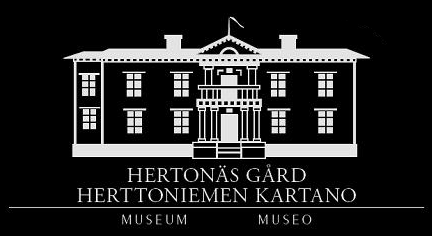The liquor punch was created in the 17th century as a sweet alcoholic beverage made with the following ingredients: arrack (a palm- and ricebooze), lemon, sugar, tea and water. Due to the global trade the beverage spread with the seamen around the world. Punch has been served both cold and warm. Thanks to the East-Indian trade companies the arrack and the punch became popular also in Europe.

A bowl for serving punch painted with the initials COC (Carl Olof Cronstedt), East-Indian porcelain, dated to the late 18th century. Photo: SOV.
Vice admiral Carl Olof Cronstedt (1756-1820) has owned several bowls for serving punch and mugs and glasses. He has probably enjoyed the golden beverage also during the time he owned Hertonäs manor. A few of the objects that connect to drinking punch are still today on display in the exhibition at Hertonäs manor museum.
In Sweden (and Finland that was a part of the realm at that time) one learnt to know punch during the first decades of the 18th century. It was blended by the different ingredients and served from bowls. On 18th century parties and balls punch was enjoyed between the dances. The beverage was a luxury like wines, tea, coffee, exotic fruits, East-indian porcelain, spices and perfumes. During the wars in the late 18th century and early 19th century punch was the drink for officers and soldiers. Later on in the 19th century it became a typical drink for the students - and it is still a popular traditional drink in the student fraternities at the universities. Still today it can be served both chilled and steaming hot.

Bowl for serving punch with glasses. Also mugs were used to serve punch in. The beverage was popular on feasts and balls. Painting from 1795-97 by Nils Schillmark (1745-1804).The Finnish National Gallery.
Sources:
Backman, Sigbritt 2016: Hertonäs gård - från säterier till museum. SOV: Helsingfors.
Bäcksbacka, Christina 1995: Viceamiral Carl Olof Cronstedts hem. SMYA 102. SMY: Helsingfors.
Gammals, Leo 2012: Flytande guld. En bok om finsk punsch. Helsingfors.
